Hi there everyone. As you can see, I'm new to the forum, so I apologize if this has been asked before. I bought my house about a year and a half ago. It came with a beautiful little wood stove that, to my surprise and delight, heats the house beautifully. It is an old stove, though, so I have been wondering if something newer would be significantly more efficient. My father in law is also very concerned about the danger of having a wood burning stove in the house, especially regarding long term smoke inhalation. He has very generously offered to buy us a new stove as our holiday present.
So, I went to a shop today to take a look at the new stuff. In talking to the salesman, who appeared knowledgeable, he concluded our stove is working as well as a new, EPA certified stove would, and he didn't think he should sell me a new one. When I run our stove - 4 or 5 months of the year - I don't notice any smoke in the house, and there is no visible smoke exiting the chimney. If I fill it full of wood, I usually have coals left to restart a fire after 5 hours or so. My impression from reading about the newer EPA stoves is that they absolutely are more efficient and put out less polution. The salesman said that there isn't a difference between the good old stoves (he did make a distinction between the good and the bad) and the new stoves. Based on my description of how ours works, he didn't think we'd see an improvement with something new.
Our stove is a Washington Stove Works Parlor Stove, No. 24. I have had a hard time finding information about it. The salesman was curious about it and asked me to email him photos. I'm attaching them here, too. There is a crack in the back of the stove, running through the words "upper back." No idea if that's a problem. The door also only has a mesh screen, rather than glass. If we keep the stove, I wonder if I should buy some ceramic glass for the door.
I'd love any opinions about the stove and the benefits of getting something new. Please let me know if I left out any details. Thanks!
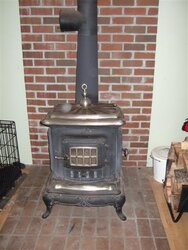
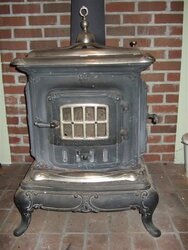
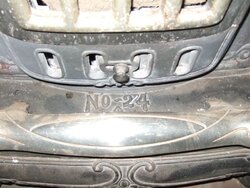
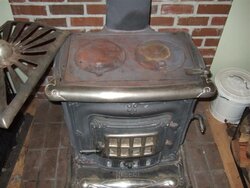
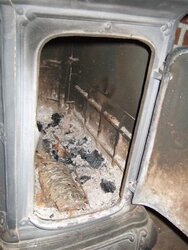
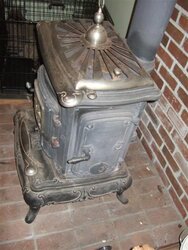
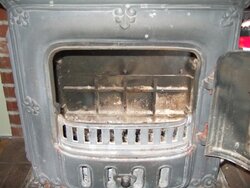
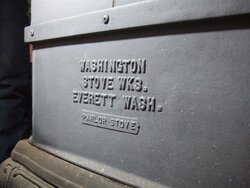
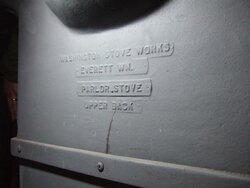
So, I went to a shop today to take a look at the new stuff. In talking to the salesman, who appeared knowledgeable, he concluded our stove is working as well as a new, EPA certified stove would, and he didn't think he should sell me a new one. When I run our stove - 4 or 5 months of the year - I don't notice any smoke in the house, and there is no visible smoke exiting the chimney. If I fill it full of wood, I usually have coals left to restart a fire after 5 hours or so. My impression from reading about the newer EPA stoves is that they absolutely are more efficient and put out less polution. The salesman said that there isn't a difference between the good old stoves (he did make a distinction between the good and the bad) and the new stoves. Based on my description of how ours works, he didn't think we'd see an improvement with something new.
Our stove is a Washington Stove Works Parlor Stove, No. 24. I have had a hard time finding information about it. The salesman was curious about it and asked me to email him photos. I'm attaching them here, too. There is a crack in the back of the stove, running through the words "upper back." No idea if that's a problem. The door also only has a mesh screen, rather than glass. If we keep the stove, I wonder if I should buy some ceramic glass for the door.
I'd love any opinions about the stove and the benefits of getting something new. Please let me know if I left out any details. Thanks!









Last edited by a moderator:


 Of course its not my cash but when you eventually replace it you will wonder why you waited so long
Of course its not my cash but when you eventually replace it you will wonder why you waited so long